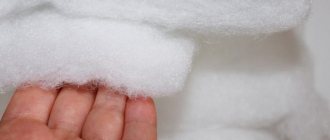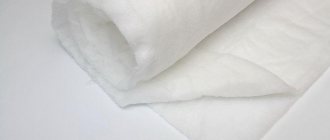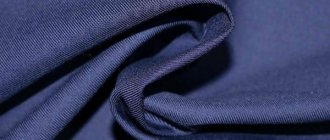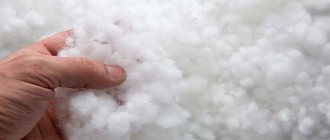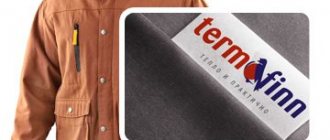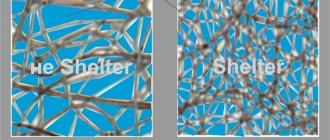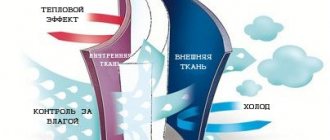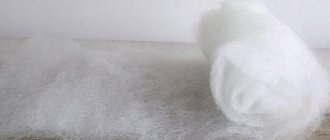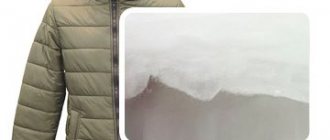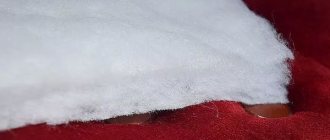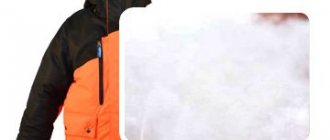How is thermofiber made?
Petroleum derivatives of polyethylene terephthalate and its derivatives are used as the starting material. During production, microfibers are soldered together under the influence of strong heat treatment. The technology differs from the manufacture of padding polyester in that no toxic products are produced during production and no glue is used. Although in favor of modern padding polyesters it can be noted that they have become completely different than they were 15-20 years ago, and their consumer properties are not much inferior to holofiber.
During the manufacturing process, the fibers pass through a carding machine and are immersed in a hot oven, where under the influence of high temperature they are combined and turned into a large canvas.
The web then passes to the winding unit, where it acquires the correct degree of shrinkage and thickness.
Varieties
May have several types. All varieties are made from polyester fibers and differ only in density and thickness. Depending on the thickness and length of the thread, thermofiber is divided into:
- Soft. The material is soft, light and very closely resembles natural down. It is universal and can be used in various areas where insulation is necessary. The thickness to length ratio is 7D/32.
- Hard. The ratio of fiber diameter to length is 15D/64. The canvas has good elasticity and quickly restores its original shape. Less elastic, therefore suitable for filling large parts.
- Vatu. In appearance, the water resembles natural cotton material. It is characterized by low density and low weight. Thin fibers are short in length, which ensures the airiness of the material. However, it is less durable than other varieties.
- Balloons. They are made from both hard and soft threads. Strongly twisted fibers are collected into small lumps-balls. The variety is characterized by an increased degree of elasticity and restoration of condition.
Properties of thermofiber.
- ▶ elasticity: the fibers are crimped and hollow, they retain warm air inside and keep cold air out;
- ▶ well ventilated and does not caking;
- ▶ improved hydroscopicity: it gets wet less and dries much faster;
- ▶ structural volume and uniform surface: lush and light, gives a beautiful appearance to the products;
- ▶ lightness: replaces 2-3 layers of glued padding polyester;
- ▶ hypoallergenic: bacteria and dust mites do not grow in it even after long-term storage;
- ▶ high level of strength and softness;
- ▶ uniform shrinkage characteristics.
This is a thermoregulating material that maintains body temperature when the child is first dressed, and already outside a microclimate is formed that does not allow the cold to pass through. It is almost impossible to sweat in such clothes, but you can actively play in snowy weather - they do not absorb moisture.
Thermofiber and temperature regime.
Clothes with synthetic insulation are worn in autumn, winter and spring. Manufacturers select the correct material thickness for different weather conditions.
The approximate spread can be seen in the table.
Approximate walking temperature
It must be remembered that the outer fabric and lining also have certain properties, so the data may fluctuate. Also, a child’s individual perception of the weather may vary, so a choice must be made taking into account all parameters.
How to care for clothes.
Caring for jackets with thermal fire is very simple, because it does not shrink, does not wrinkle, and dries quickly. Since, in addition to insulation, the overalls contain outer fabric, lining, and fittings, the cleaning conditions are indicated on each product individually. After purchasing, be sure to keep the sewn-in tag with recommendations on the product itself. But what if there is no tag? Of course, you can follow the general principles of product care:
- ▶ Can be washed in a drum washing machine at the lowest possible temperature,
- ▶ Soaking with powder is acceptable at a temperature not exceeding 40 degrees,
- ▶ It is recommended to use liquid washing gels: they do not accumulate in fabrics and are washed out in a few rinses,
- ▶ Can be ironed when the iron is heated to 100 degrees,
- ▶ It is advisable to dry in a vertical position in a ventilated area to preserve the appearance and thoroughly dry.
Thermofiber jackets and sets are relatively inexpensive and have excellent thermal and performance characteristics. This filler is used by progressive companies - Alma-Tex (Alyusha), Lapland and others. The clothes are warm, comfortable and beautiful!
19.10.2016
Winter is coming, which means it's time to warm up. To make your choice easier, Children's Town has prepared a review of the fillings used by children's clothing manufacturers.
Natural fillers:
In down jackets and coats, the percentage of down and feather is very important. In a good down jacket it is from 60%/40% to 80%/20%, where the first number is the amount of down. There is no such thing as 100% fluff.
Down fibers are very mobile, which eliminates the possibility of down “climbing” to the surface. All seams on down clothing also undergo special treatment.
It is also necessary to take into account that down is an allergen and an excellent breeding ground for mites, so its antibacterial treatment is very important. Also, one of the main disadvantages of down is its ability to absorb moisture and certain difficulties when washing.
Children's winter overalls with eider down, designed for walking in severe frosts. Goose down is also good. Duck down as insulation is best suited for demi-season clothing. Down clothes are best worn in areas with a dry, frosty climate; in non-frosty, wet winters, down children's clothing can contribute to the greenhouse effect and the child may overheat.
Down (in addition to using other fillers) is produced by the following companies: BILEMI, STEEN AGE, Arctiline (Russia), Chicco (Italy), O'Hara (Canada), Il Gufo (Italy), Zera (Spain), Premaman (Belgium) and etc.
The advantages of this material include its durability, hypoallergenicity and wear resistance. Wool retains heat well, but at the same time absorbs moisture well and has a lot of weight.
Retains heat perfectly down to -25°.
Products made from Alpolux® insulation are incredibly light and warm, thanks to the combination of high-quality microfiber and natural merino wool. Alpolux® is an absolutely environmentally friendly product that is made only from primary raw materials. Primary raw materials do not contain impurities (e.g. broken glass, crumbs, dust, dirt) that are present in secondary raw materials, because This is the recycling of all kinds of garbage.
Alpolux® insulation was developed by Austrian experts specifically for Russian weather conditions, based on the European traditions of using wool for the manufacture of outerwear.
Synthetic fillers:
Termofinn is a combination of hollow, highly crimped and biocomponent fibers, thermally bonded at high temperatures. Termofinn is made only from primary raw materials - an environmentally friendly product LIGHT WARM SOFT. More voluminous and stable - due to a special production technology - 80% of the fibers are bonded vertically in the layer. Easy to cut and sew. Environmentally friendly product - SAFE FOR CHILDREN. Retains its shape well after washing and dries quickly Can withstand long-term storage and does not require special storage conditions
Isosoft – European quality
In 2003, the Belgian company Libeltex, which develops and produces non-woven products made from synthetic fibers, patented an innovative material called “isosoft”.
Isosoft: what is it?
Isosoft consists of tiny polyester balls, the space between which is filled with air. It is this air gap that makes the material surprisingly warm.
The outside of the insulation is covered with a two-layer polymer coating, which completely prevents cold air from getting under the clothes. By not allowing heat to penetrate outside, isosoft, at the same time, does not create a “greenhouse effect”, since all excess moisture has a free exit through the pores of the material. Isosoft is available in different densities, which allows it to be used in clothing for different seasons:
In general, the temperature range at which you can feel cozy and comfortable in clothes with isosoft ranges from +10 to -300C.
Basic properties
Isosoft has high performance qualities:
- High degree of thermal protection.
- Excellent breathability - the material “breathes”.
- Insignificant thickness - isosoft is five times thinner than synthetic winterizer.
- Low weight makes it possible to use insulation for sewing children's clothing.
- Softness and elasticity - the material easily restores its original shape after deformation.
- Hypoallergenic - dust mites, various microorganisms and bacteria that can cause allergies do not accumulate in isosoft.
- Wear resistance - the polymer coating prevents the insulation fibers from leaking out, which is the problem with products with down or synthetic padding, which significantly increases the service life of clothing.
- Quick drying - isosoft does not accumulate moisture: clothes become dry very quickly after getting wet.
Scope of application: what to sew
Thermofiber of various densities and thicknesses is used in various fields. Due to its lightness and high level of thermal insulation ability, it is used to sew:
- Outerwear.
- Home textiles.
- Furniture covering.
It is used to make soft toys and souvenirs for children.
Use allows you to significantly reduce the weight and volume of the finished product, which is important when sewing outerwear. Find out about the knitwear catalog from Beloshveyka Raskazovo at this link.
Due to the hypoallergenic nature of the fibers, the material can be used for sewing toys and home textiles for children.
In mattresses
Bulky nonwoven fabric is often used to make mattresses and flooring. The fiber has a high level of compression, resembling the action of springs. This feature gives the mattress an additional orthopedic effect.
Durable and wear-resistant fabric with a density of 750-800 g/m2 has a long service life and has good heat transfer properties. The fibers ensure air circulation, making mattresses made from this material suitable for children and people with allergies and bronchial asthma. For people with an allergic reaction to certain types of fabric, clothes are also made from nettle.
Holofiber and thermofiber - always warm and comfortable
Among the many modern insulation materials, two more materials deserve attention - holofiber and thermofiber. They are similar in many ways, but there are also significant differences. Each of the materials consists of sealed thin hairs, twisted in the form of springs. Only in the case of holofiber, the fibers are solid, while in thermofiber they are hollow inside, which creates an additional air layer.
To produce these insulation materials, polyester is used, which is pre-fluffed and then, under the influence of high temperatures, formed into sheets of various thicknesses. Both holofiber and thermofiber are used not only in insulating outerwear, but also in the production of pillows, blankets, sleeping bags, and upholstered furniture.
Characteristics of insulation
Both materials are in demand due to their excellent qualities:
- retain heat remarkably well, providing comfort even at -25o C;
- hygienic - do not cause allergies, do not accumulate dust;
- well ventilated, a person not only does not freeze, but also does not sweat;
- easy to care for - easy to machine wash, dry quickly.
In addition, compared to natural sheepskin, holofiber and thermofiber have significantly less weight. Blankets and pillows filled with these fibers are lightweight and easy to store. Isosoft, thermofiber or holofiber - any of these insulation retains heat well. However, the cost of European materials is several times higher than that of domestic ones.
Important! Clothing with isosoft should only be purchased from trusted manufacturers, since cheap, low-quality materials are often hidden under the familiar logo.
Thinsulate – space technologies
Back in 1973, on behalf of NASA, the American company 3M began developing an insulating material that could withstand even the cold of space.
The efforts were crowned with success, and Thinsulate appeared, the production technology of which remained secret for many years. It was originally used to equip climbers and astronauts. In recent decades, this ultra-thin material has been successfully used in sewing both everyday and special clothing.
Safety is our strong point
In 2010, the Holofiber trademark was recognized by Rospatent of Russia, and it was given the official status of a “well-known trademark.” Subsequently, licensed products from Holofiber received a certificate of environmental and hygienic safety.
Worth knowing: how to choose a mattress for a newborn.
Comfortable sleep: choose a blanket. Expert opinion in this article.
This certificate allows the use of holofiber in the manufacture of orthopedic products, products for newborns (its direct interaction with children's skin is allowed), as well as hypoallergenic hygiene products.
